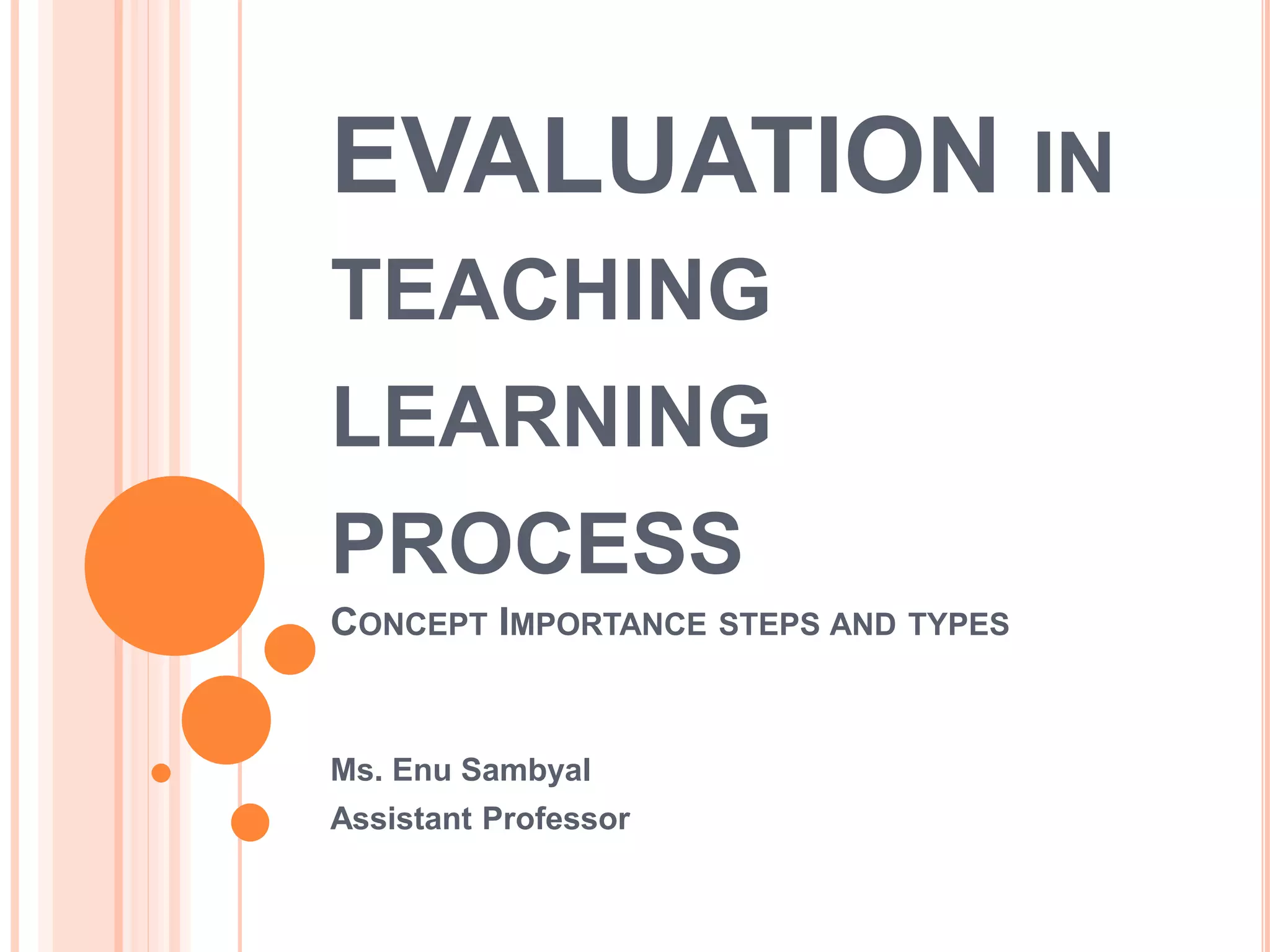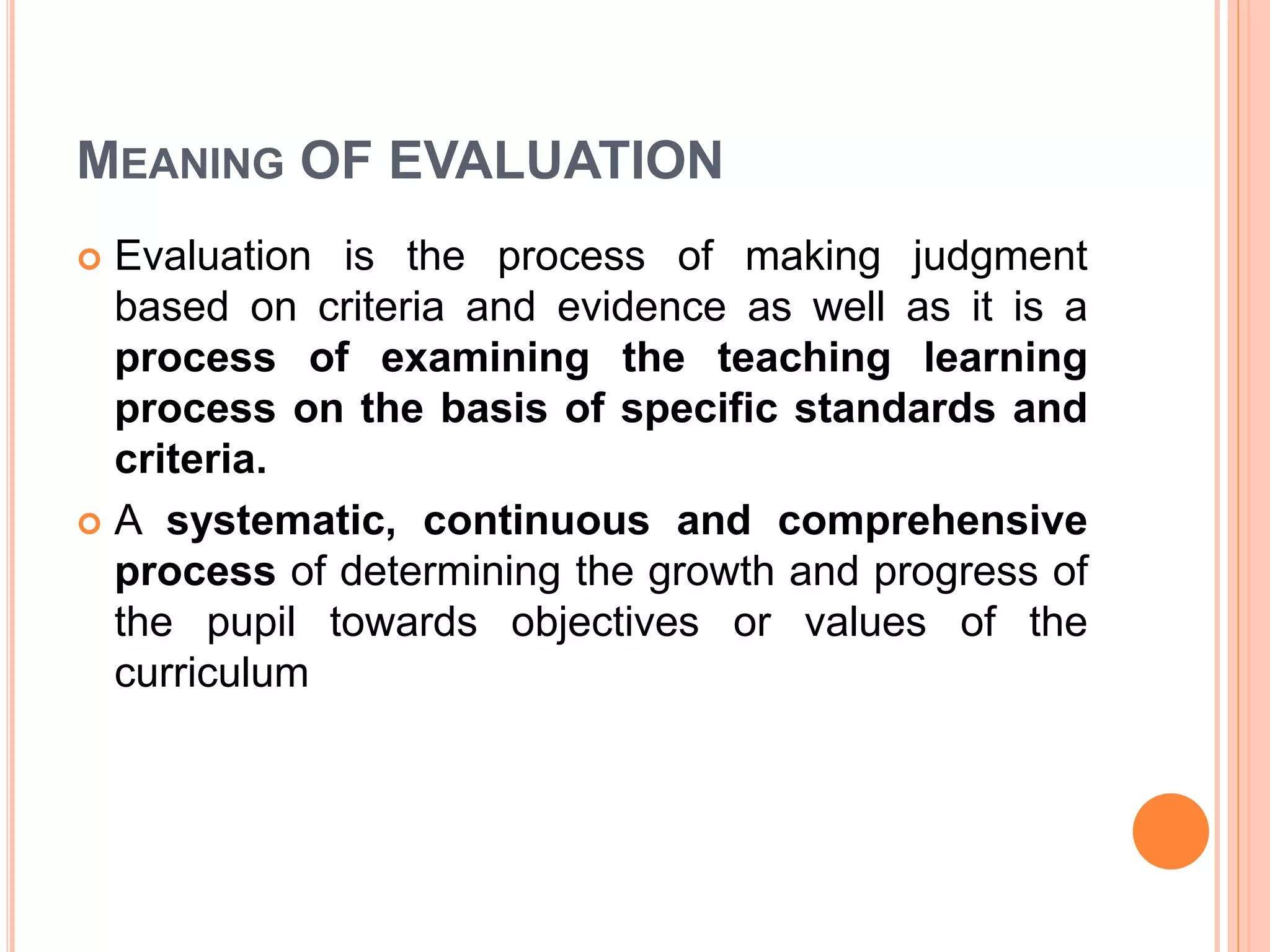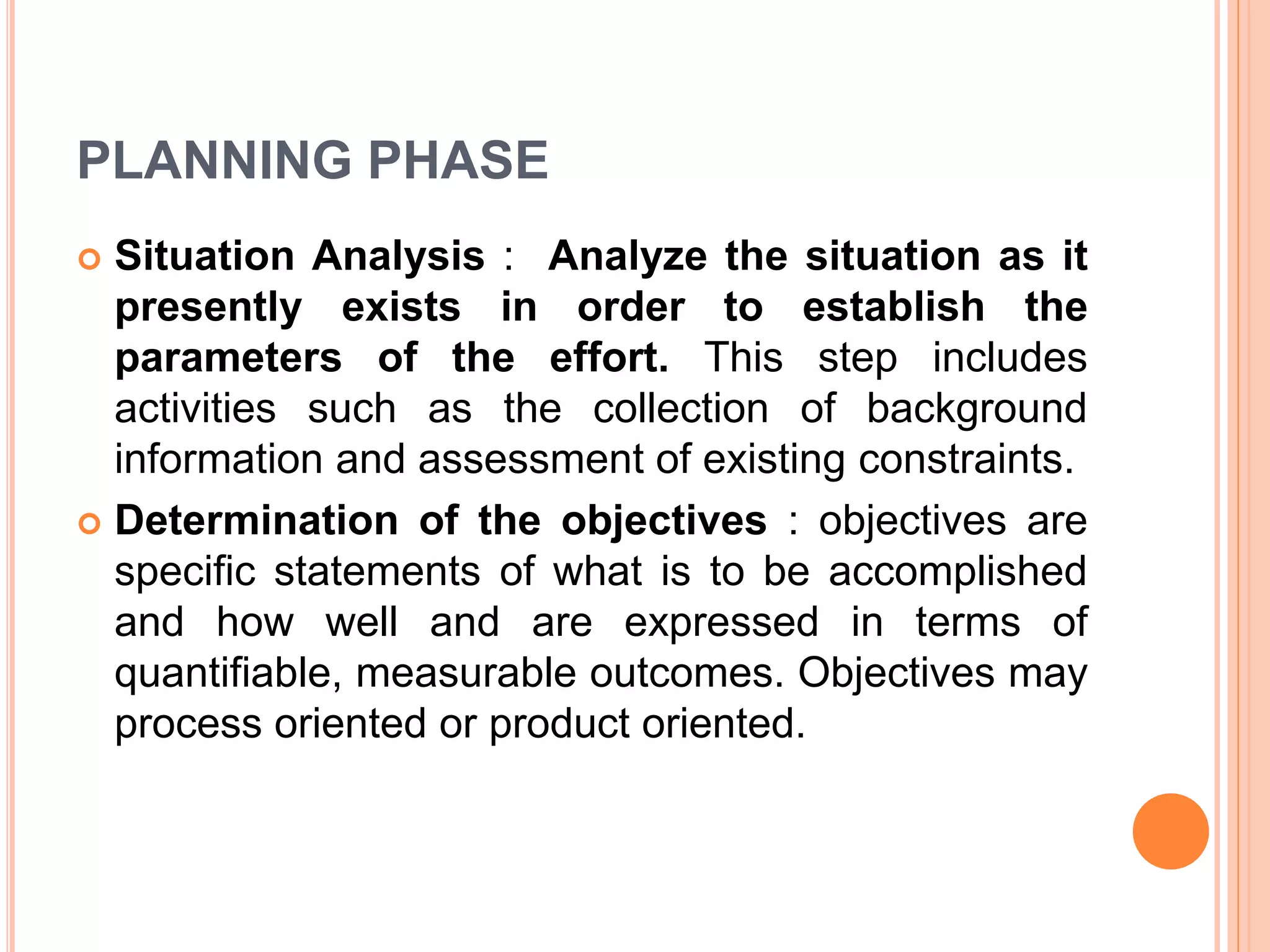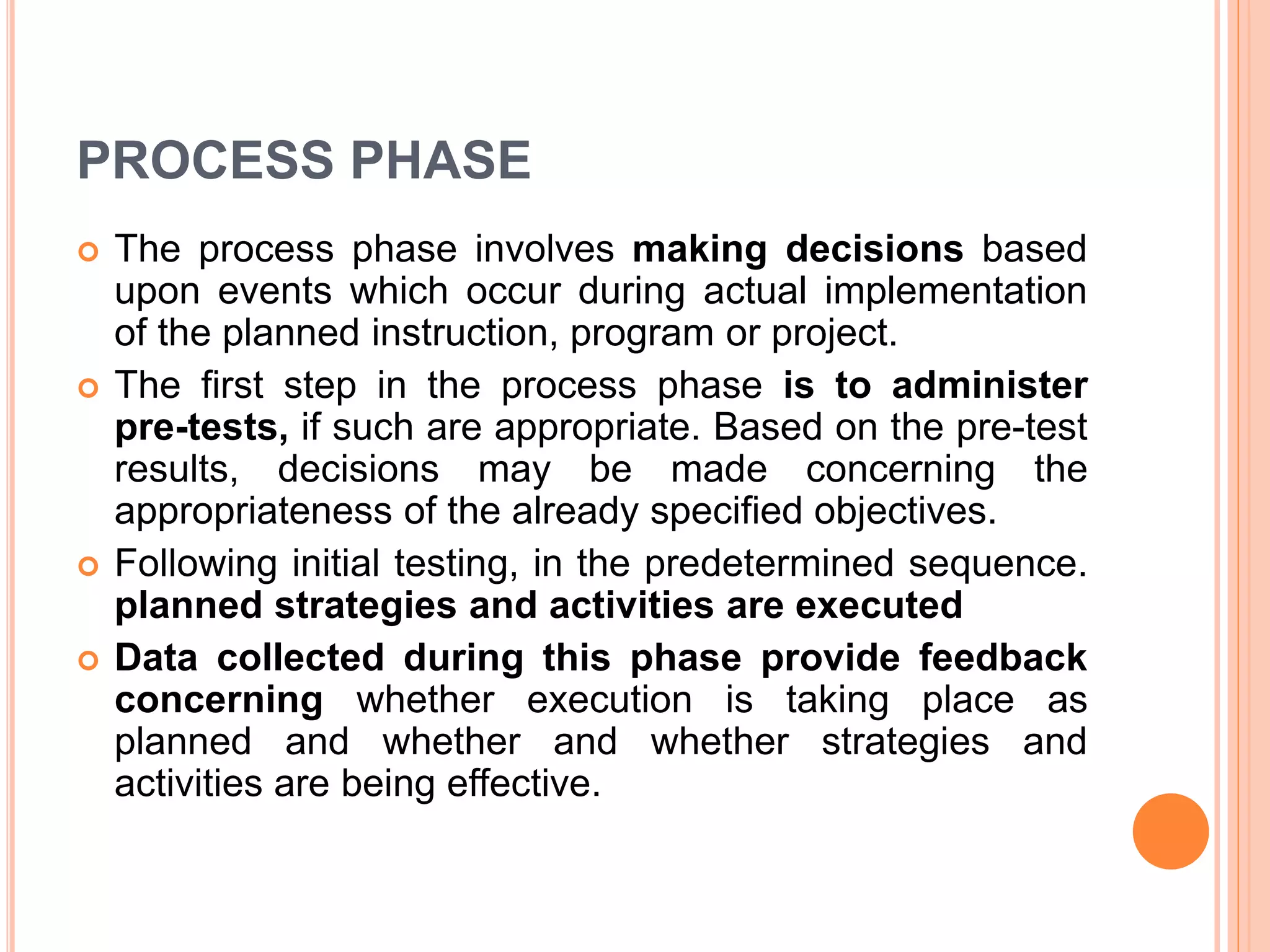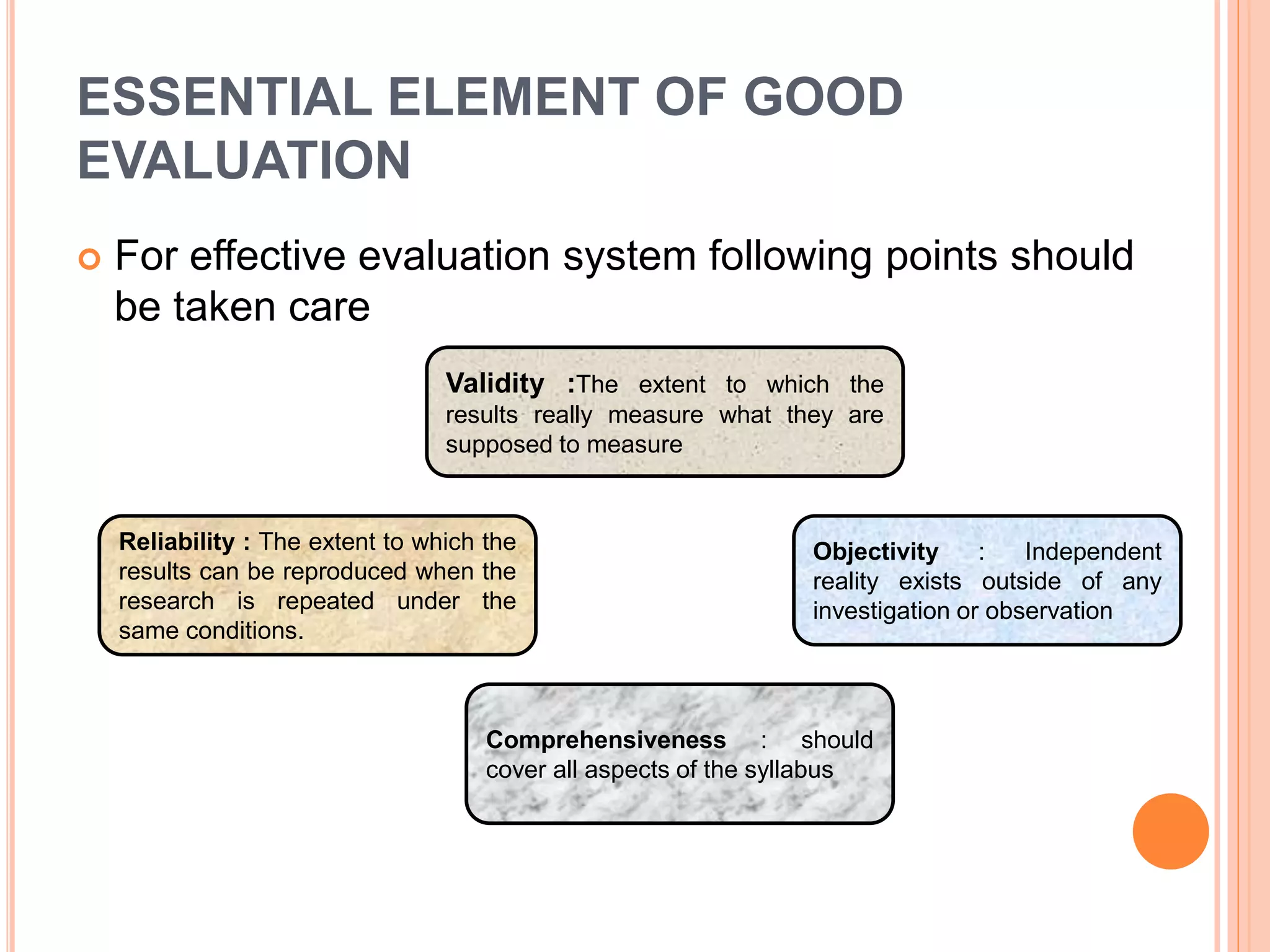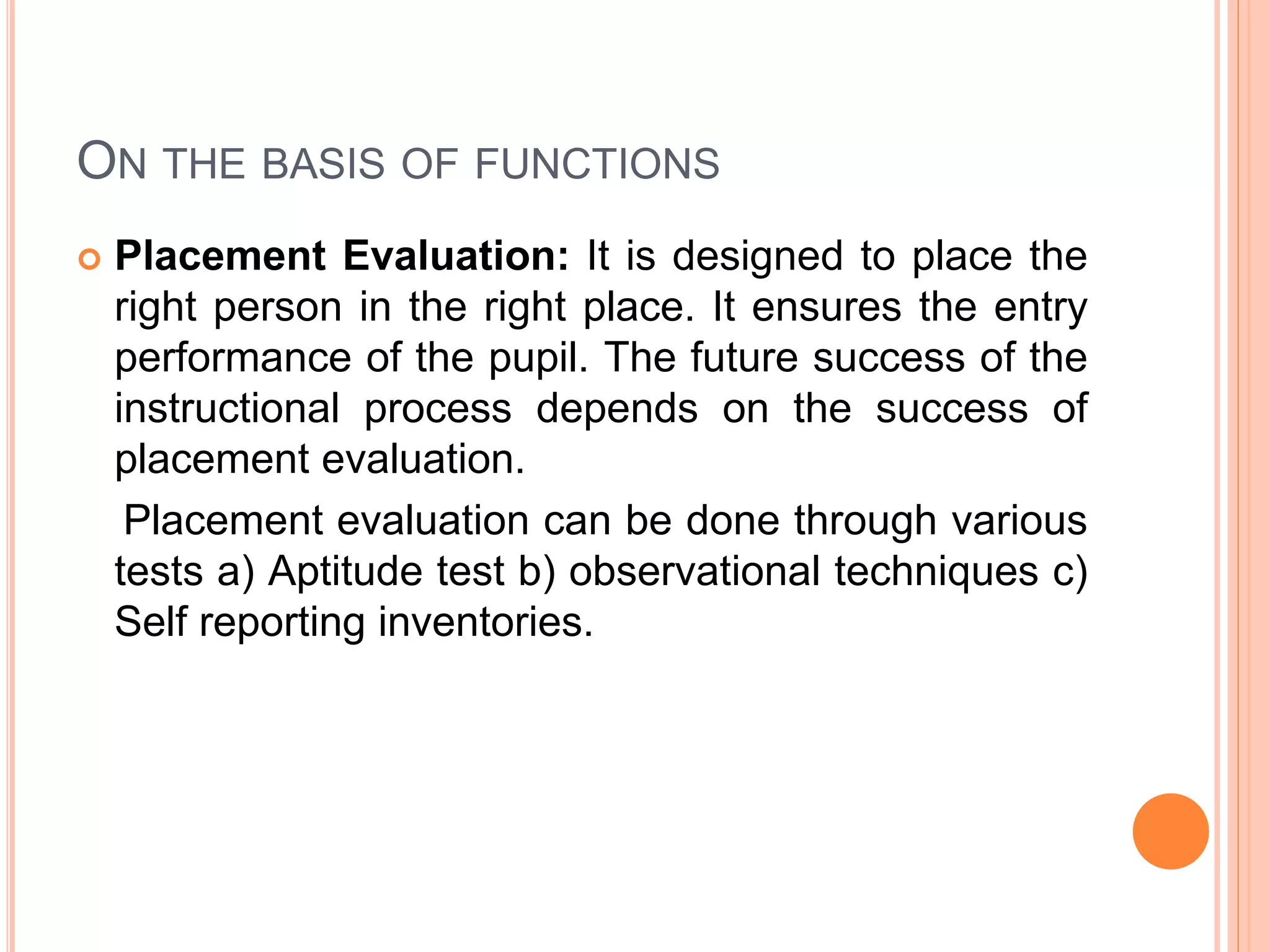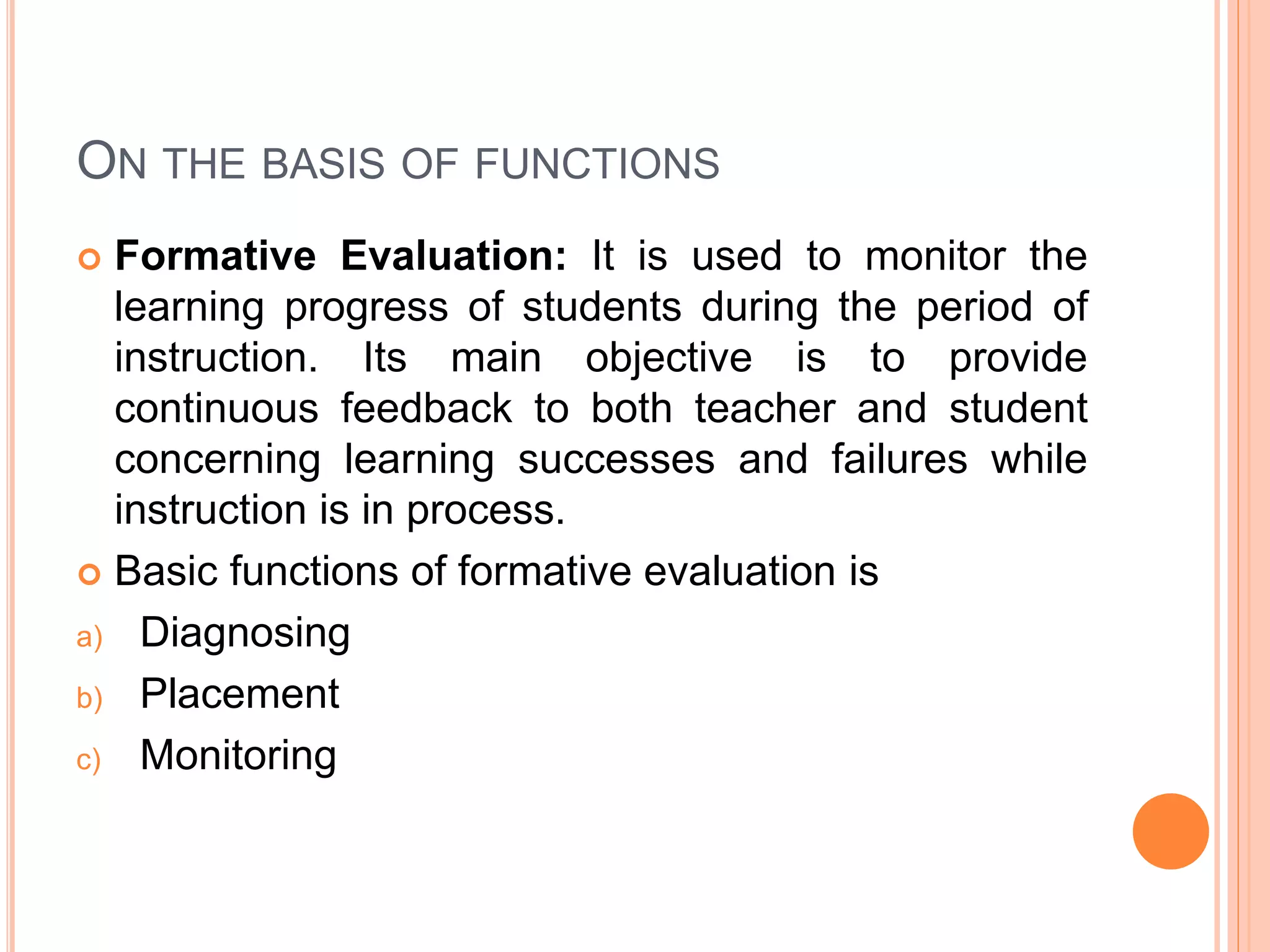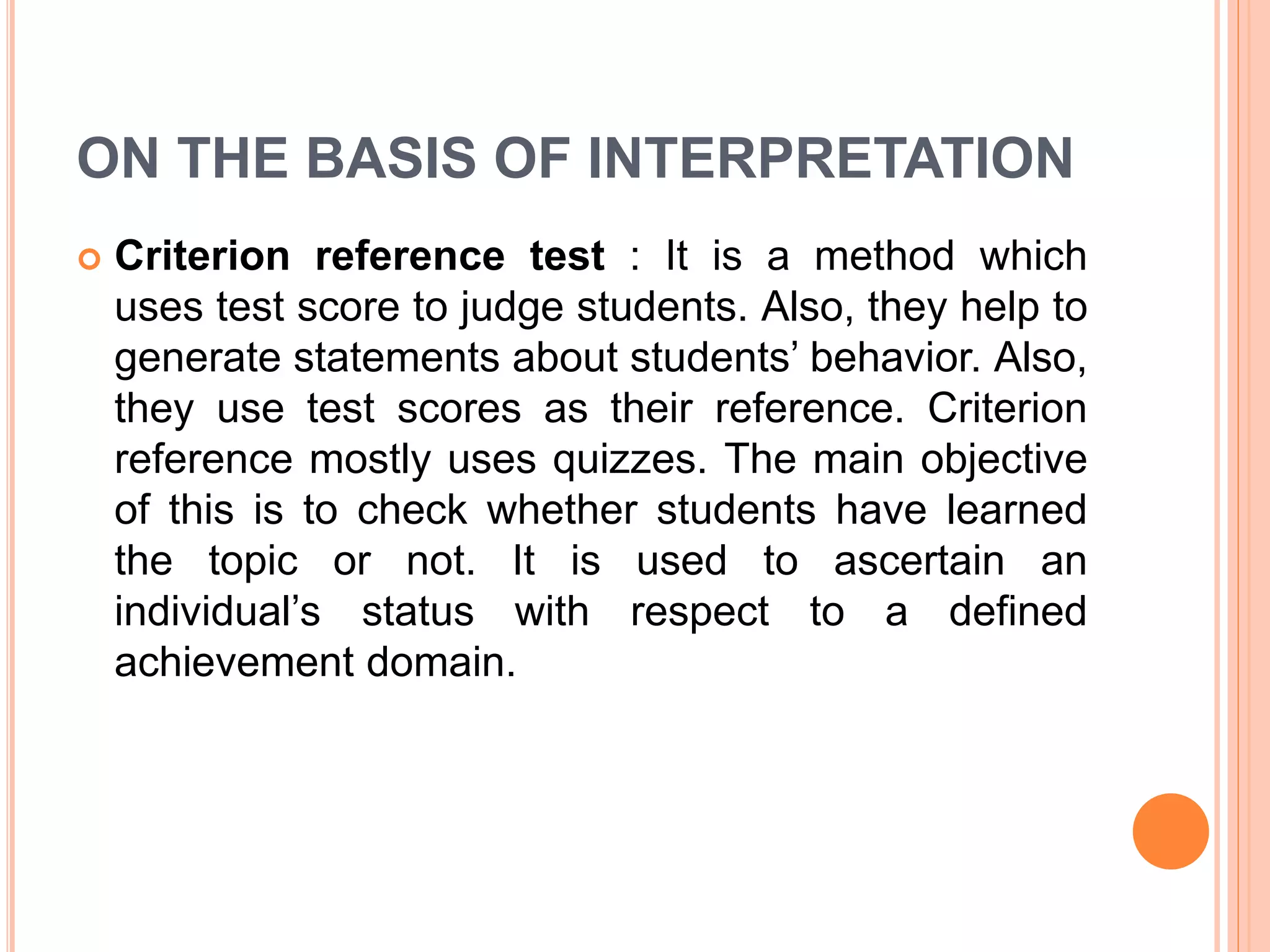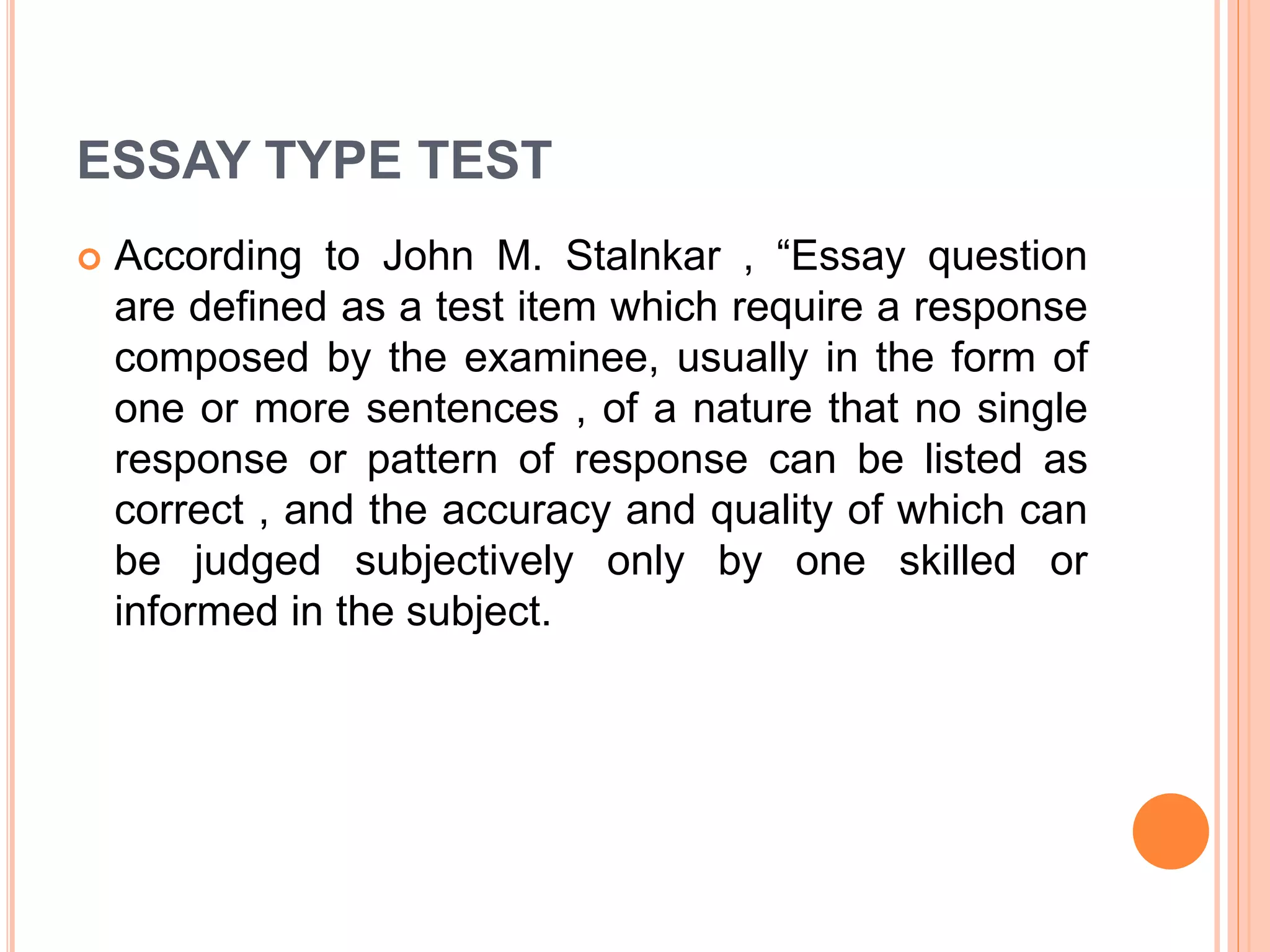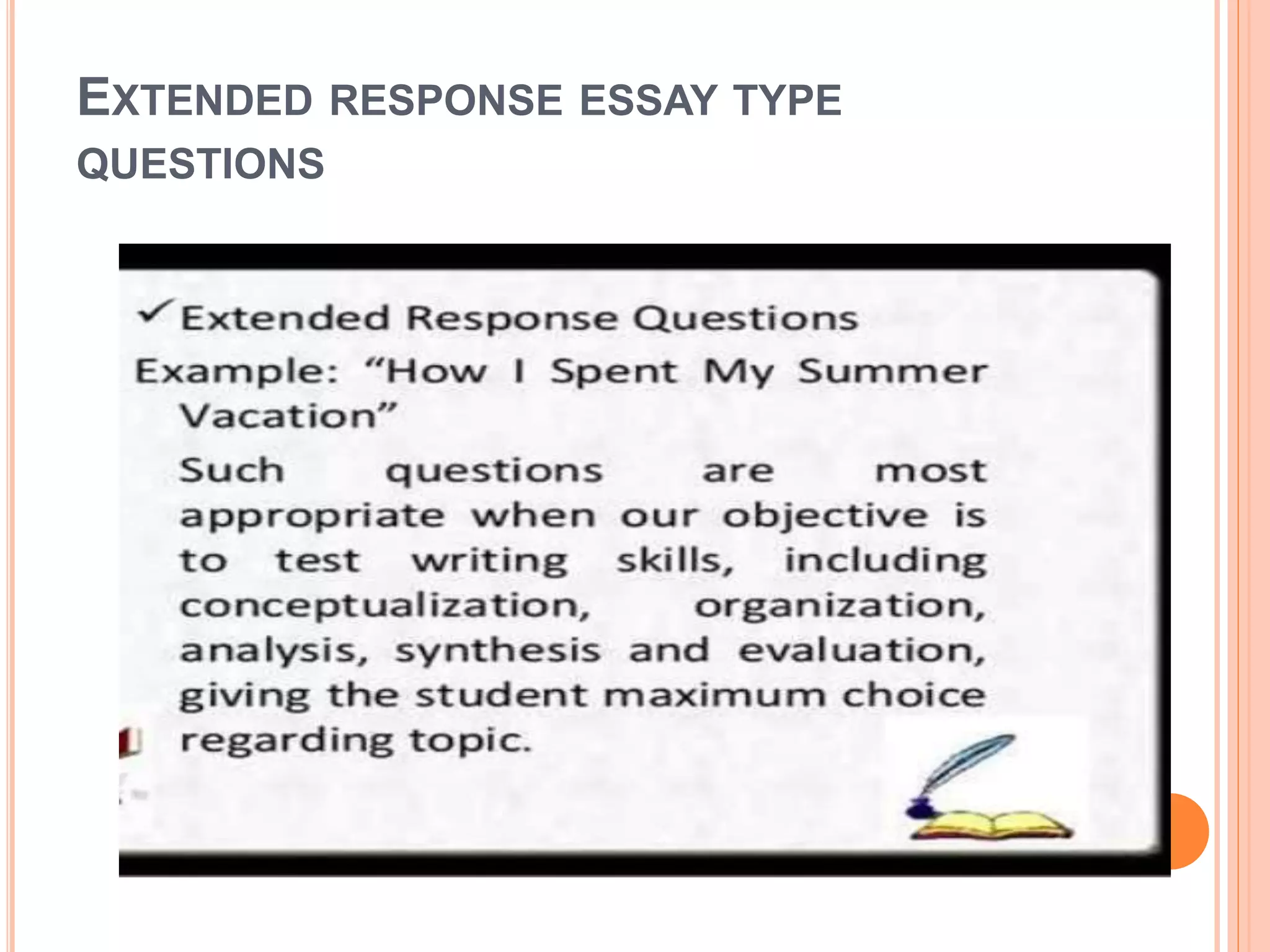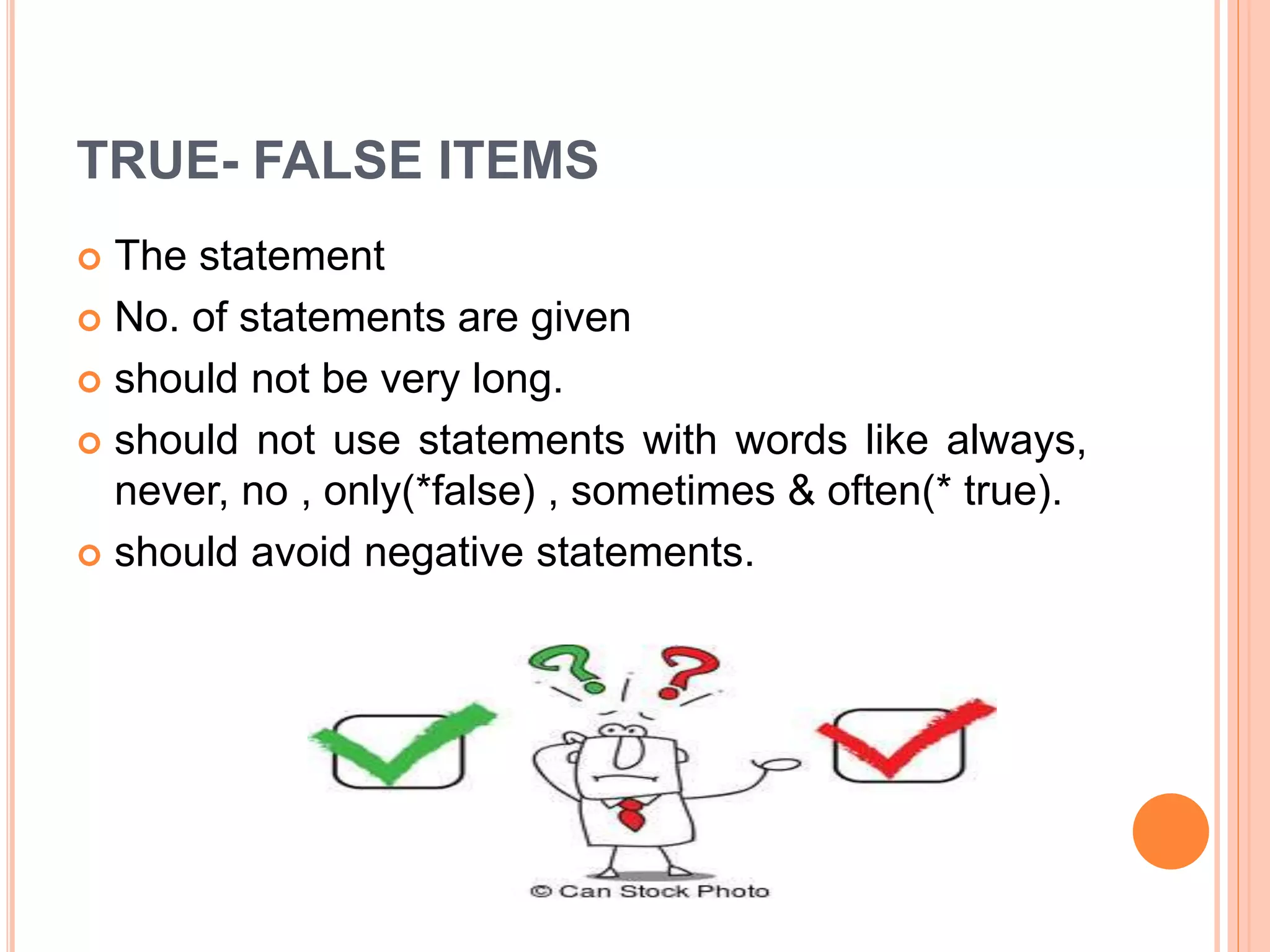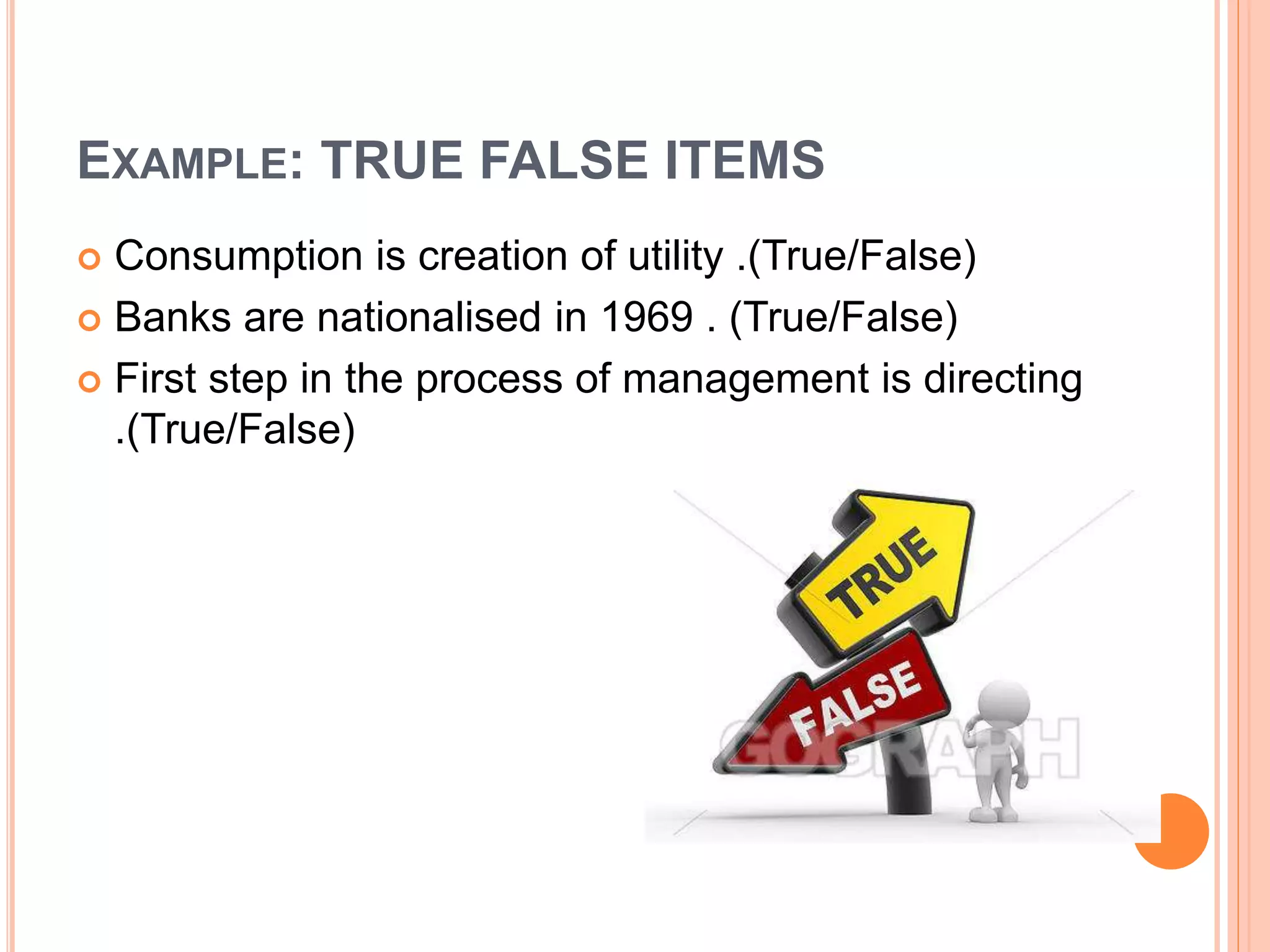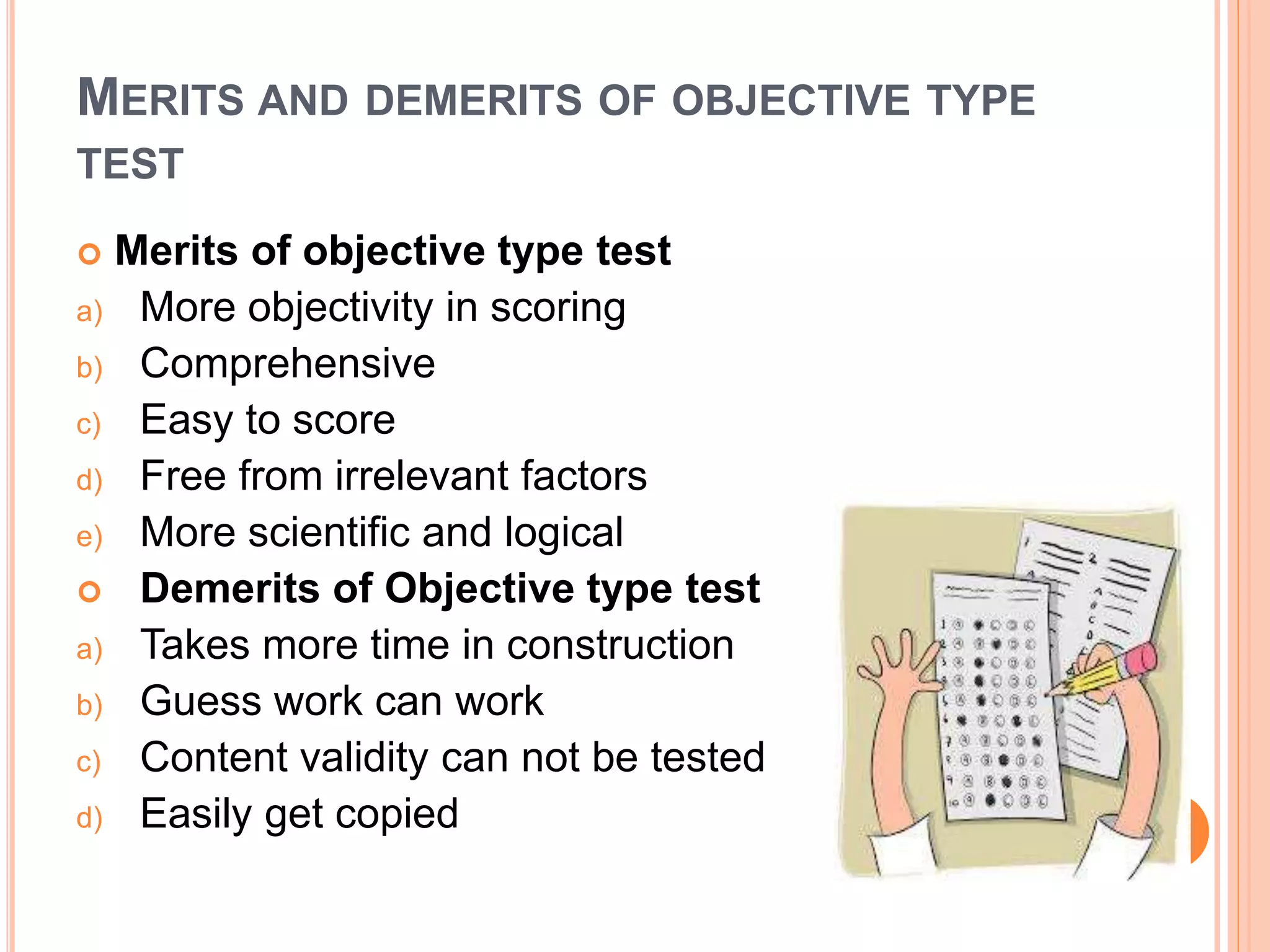The document discusses different aspects of evaluation in teaching and learning including the concept, meaning, definition, characteristics, principles, types, and steps. Evaluation is defined as the process of making judgments about the effectiveness of teaching and learning based on criteria and evidence. There are different types of evaluation classified by function (formative, summative, diagnostic, placement), approach (criterion-referenced, norm-referenced), and interpretation (formative, summative). Effective evaluation is systematic, continuous, comprehensive, objective, reliable, and valid. It follows the planning, process, and product phases with steps like determining objectives, selecting instruments, and analyzing results.
